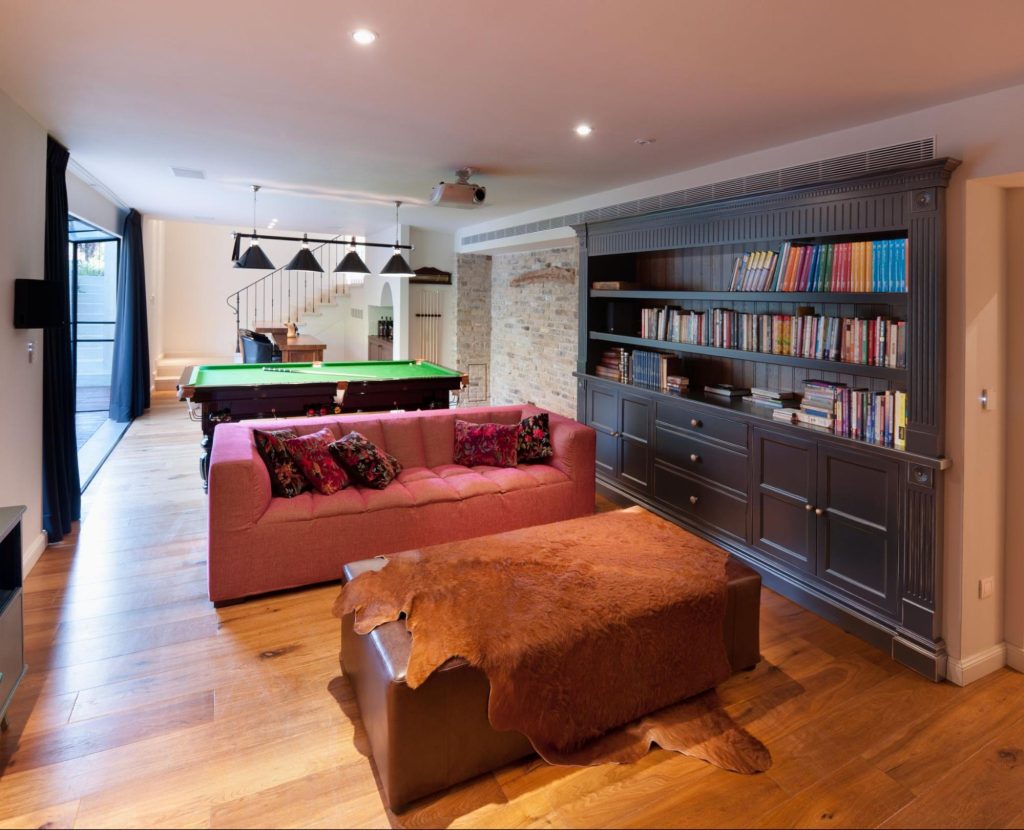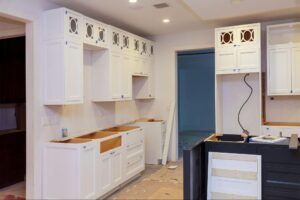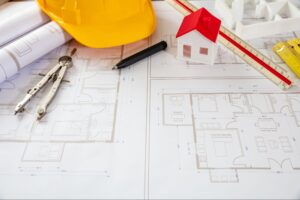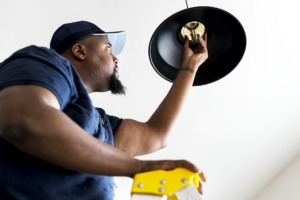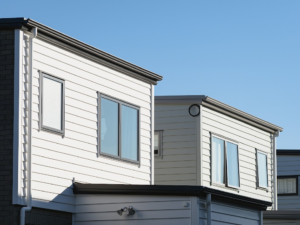Basements provide significant additional square footage that can be tailored to several uses. Often serving as storage areas or utility rooms, basements have the potential to be so much more. When finished and optimized, this additional space can alleviate the strain on the main living areas, making the home more spacious and organized. With thoughtful planning and design, your basement can become a versatile space that enhances your lifestyle and meets various needs.
Transforming Your Basement Into a Multi-functional Space
Converting your basement into a multi-functional space can significantly improve your home’s usability and appeal. With careful planning and creative design, your basement can become a valuable extension of your living space. Here are some basement finishing ideas to help you maximize this valuable area.
Assess Your Basement
Evaluate your basement’s condition, focusing on structural integrity, moisture levels, and insulation. Professional inspections ensure safety and feasibility, identifying potential issues such as cracks, leaks, or insufficient insulation. Planning the space involves mapping out intended uses and noting necessary repairs or upgrades. Establish a budget that accommodates essentials and desired enhancements to guide your project efficiently.
Maximize Natural Light
Natural light significantly improves the ambiance of basement spaces. Increase light through more oversized windows, window wells, and reflective surfaces. Glass doors and partitions help spread light further into the space. Consider installing light tubes and sun tunnels to channel sunlight from above, brightening even the deepest corners of the basement.
Create Functional Zones
Dividing your basement into specific areas enhances its usability. Using partitions, furniture arrangements, and decor, establish entertainment, work, guests, and fitness zones. To maximize versatility, integrate flexible furniture, such as fold-out sofas or convertible desks. Implement effective storage solutions to keep each zone organized and clutter-free.
Design an Entertainment Area
Design an engaging home theater with quality equipment, comfortable seating, and proper acoustics. A game room can feature pool tables, arcade games, and board games, creating a lively environment for fun and relaxation. Adding a bar or kitchenette provides convenience for snacks and drinks. Use comfortable seating and ambient lighting to create a cozy atmosphere for family and friends.
Set up a Home Office or Study
Set up an ergonomic and productive workspace with ample lighting, noise control, and reliable internet connectivity. Storage solutions for office supplies and documents help maintain order. Personalize the space with decor that inspires focus and creativity, making the office inviting and conducive to work. This dedicated area ensures a professional and efficient work-from-home environment.
Create a Guest Room or Suite
Design a comfortable guest room with essential amenities like a bed, bathroom, and closet space. Decorate with soothing colors and adequate lighting to create a homely feel. Consider soundproofing and separate entrances if possible to ensure privacy and comfort for guests, providing a retreat-like experience. This setup makes hosting visitors a pleasant and stress-free experience.
Plan a Home Gym
Plan your gym layout to accommodate exercise equipment while ensuring safety and accessibility. Choose durable flooring options that provide adequate support and cushioning. Soundproofing solutions minimize noise, and motivational decor can enhance the workout environment. Ensure proper ventilation to keep the space fresh and inviting.
Build a Playroom for Kids
Create a safe and fun playroom with design elements tailored to children’s needs. Implement storage solutions for toys and games to keep the area organized. Use creative decor ideas like colorful murals or themed sections to stimulate imagination. Choose durable materials and finishes that withstand active play and are easy to maintain.
Organize a Laundry and Utility Area
Design an efficient layout for your laundry and utility space, placing appliances and supplies for easy access. Organize with shelves and cabinets for detergents, tools, and other essentials. Incorporate a folding and ironing station to streamline chores. Ensure adequate ventilation and lighting to enhance functionality and comfort.
Implement Storage Solutions
Optimize storage with built-in shelving and cabinets that streamline organization. Employ creative ideas for seasonal items and bulk storage, using all available space. Utilize under-stair areas effectively to maximize storage without compromising accessibility. Maintain orderliness by implementing clear labeling and regular decluttering practices.
Add Finishing Touches
Choose appropriate flooring materials that suit your basement’s intended uses, such as carpet for comfort, vinyl for durability, or laminate for a sleek look. Enhance walls with paint, paneling, or wallpaper that reflects your style. Decorate with accessories and furnishings that create a cohesive feel with the rest of your home. These finishing touches ensure your basement is both functional and aesthetically pleasing.
Common Challenges in Basement Finishing
Turning a basement into a multi-functional space can present several challenges. Understanding and overcoming these obstacles is crucial for a successful renovation. You can create a functional and enjoyable basement by effectively addressing common issues and planning.
Moisture Control
Basements are prone to moisture issues, leading to mold and mildew. To combat this, start with a thorough inspection for leaks and dampness. Apply waterproof sealants to walls and floors and install a sump pump if necessary. Dehumidifiers can also help maintain a dry environment.
Soundproofing
Noise from basement activities can disturb the rest of the house. Soundproofing solutions, such as acoustic panels, soundproof drywall, and insulation, can help minimize noise. Carpeting and soft furnishings also absorb sound, making the space quieter. Consider soundproof doors for additional noise reduction.
Proper Ventilation
Basements often suffer from poor air circulation, leading to stale air and potential health issues. Install exhaust fans and air vents to ensure adequate ventilation. A sound HVAC system can help regulate temperature and improve air quality. Regularly cleaning and maintaining the ventilation system is essential for optimal performance.
Budgeting for Basement Finishing
A well-planned budget is essential for a successful basement renovation. Here’s a guide to help you manage your finances effectively. By budgeting carefully, you can ensure your project stays on track and within your financial limits.
Cost Estimates
Start by researching the average costs for basement renovation projects. Basic finishing might cost between $10,000 and $30,000, while more extensive remodels can cost $50,000 or more. Get quotes from multiple contractors to compare prices and services. Remember to include costs for permits, inspections, and unexpected expenses.
Saving Money
Look for ways to cut costs without compromising quality. Consider DIY tasks like painting, installing flooring, or assembling furniture. Reuse and repurpose existing materials and furnishings where possible. Shop for discounts, sales, and second-hand items to stretch your budget further.
Hiring Contractors
Hiring professionals ensures the job is done correctly and safely for complex tasks. When choosing residential building contractors, check credentials, read reviews, and ask for references. Get detailed contracts outlining the scope of work, timeline, and payment schedule. Clear communication with your contractor helps avoid misunderstandings and delays.
Choosing the Right Materials for Basement Finishing
Selecting suitable materials is crucial for a durable and appealing basement space. Here are some tips for choosing materials for floors, walls, and ceilings. Making the right choices will ensure your basement is both functional and stylish.
Flooring
Basements require moisture-resistant flooring options. Consider vinyl, tile, or engineered wood for durability and water resistance. Carpeting can add warmth and comfort but should be paired with a moisture barrier. Avoid solid wood flooring, as it can warp in humid conditions.
Walls
Insulated wall panels or moisture-resistant drywall are excellent choices for basement walls. These materials help maintain temperature and prevent mold growth. Paint with mildew-resistant properties adds an extra layer of protection. Consider wall coverings like reclaimed wood or decorative panels for a unique touch.
Ceilings
Drop ceilings or drywall are popular choices for basements. Drop ceilings allow easy access to pipes and wiring, while drywall offers a seamless look. Use moisture-resistant materials to prevent damage from leaks. Acoustic ceiling tiles can enhance soundproofing and improve the overall ambiance.
Basement Finishing Design Ideas and Trends
Keeping up with current design trends can help create a stylish and functional basement space. Here are some popular basement finishing ideas. Incorporating these trends can make your basement a modern and versatile area.
Modern Minimalism
Clean lines, neutral colors, and minimal furnishings define this style. Focus on functional furniture with sleek designs and multi-purpose uses. Open shelving and hidden storage solutions keep the space organized. This style creates a spacious and uncluttered environment.
Rustic Charm
Incorporate natural wood, stone, and metal for a cozy, rustic feel. Exposed beams, brick walls, and reclaimed wood add character and warmth. Use earthy tones and textured fabrics to enhance the look. This style works well for creating a welcoming and comfortable space.
Industrial Aesthetic
Embrace the raw, unfinished look with exposed pipes, concrete floors, and metal accents. Opt for a monochromatic color palette with pops of bold colors. Industrial lighting fixtures and furniture with clean lines complete the look. This style is perfect for a modern, edgy basement design.
Family-Friendly Spaces
Design with durability and practicality in mind. Choose easy-to-clean materials and sturdy furniture to withstand daily use. Create designated areas for different activities, such as a play zone, homework station, and media area. Bright colors and playful decor make the space inviting for all ages.
Eco-Friendly Designs
Focus on sustainable and recycled materials to create an environmentally conscious space. Bamboo flooring, recycled glass countertops, and low-VOC paints are excellent choices. Incorporate energy-efficient lighting and appliances to reduce energy consumption. This trend promotes a healthy home and a sustainable future.
Unlocking the Potential of Your Basement Finishing Ideas
Transforming your basement into a multi-functional space is a rewarding project that can significantly enhance your home’s value and usability. By addressing common challenges, budgeting effectively, choosing suitable materials, and incorporating current design trends, you can create a space that meets your needs and reflects your style. Whether adding an entertainment area, a home office, or a guest suite, thoughtful planning and execution are critical to a successful renovation. Embrace these basement ideas to unlock the full potential of your home and enjoy the benefits of a beautifully optimized living space.
Visit Build All Construction’s blog for expert tips and innovative ideas to create a multi-functional space that enhances your home.

